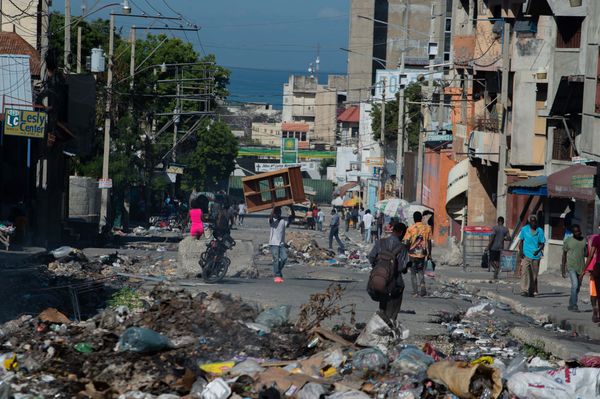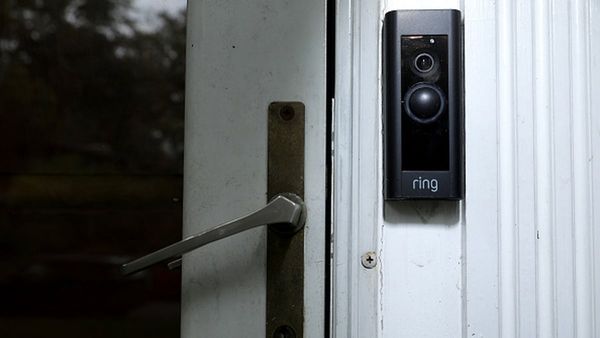
Perhaps it is inevitable that the two most persistent evils in human societies – racism and misogyny – can be at times difficult to define and pin down.
It’s like the elephant in the archetypal parable about the blind men who each touch one part of the beast and assume they know its nature.
One touches the tail, and conceives a snake-like creature. Another the flank, and thinks of pillows and comfort. Another the tusk, and perceives danger.
When they compare notes, they can’t believe the other’s account to be genuine. They suspect the others of delusion, or even of lying.
Some of the obvious signs and symptoms of racism are a subjective experience, so we often find it hard to agree on the nature of the problem, let alone tackle it.
This might go some way to explaining why, after the disturbing anti-immigration protests on the weekend, we can’t agree on what they mean and whether racism was at their core.
In this age of misinformation, even the numbers of protesters are not agreed. Elon Musk, a metaphorical blind man if ever there was one, shared a post on X which claimed it was 150,000 in Sydney and Brisbane. Police say it was closer to 21,000.
Even immigration numbers have been misreported. The spurious claim that 1,500 migrants arrive every day in Australia was used by 2GB Radio host Ben Fordham, among others, to suggest the “March for Australia” protests were being held as a response to legitimate concerns about housing, rather than motivated by racism. But the figure he used is wrong, as the Australian Bureau of Statistics has been trying to make clear.
Meanwhile, Andrew Bolt on Sky News Australia bangs the same drum. He asserted that while there were a minority of racist “morons and thugs” at the protests, it was “defaming some good people” to claim that racism was the prime motivation.
Australia has a long history of this kind of defensiveness and denial.
When ABC journalist Laura Tingle stated at the Sydney writers’ festival that Australia was a racist country, it caused an outrage. The Australian newspaper editorialised that she had demonstrated “loathing for the country the ABC is funded to serve”.
Before that, Stan Grant got into trouble for commenting, during the ABC’s coverage of King Charles’s coronation, that the crown represents the invasion and theft of land from Indigenous Australians.
For this he was mocked and abused. And yet, as he pointed out, Australia is the only Commonwealth country not to have signed treaties with First Nations people. “We cannot live in the fantasy Australia that pretends we have transcended this history,” he said.
Further back, there were the 2005 Cronulla riots, which radio shock jock Alan Jones helped to incite by describing Lebanese Muslims as “vermin” who “rape and pillage a nation that’s taken them in”.
The then prime minister, John Howard, declined to describe the Cronulla riots as racist, and has more recently held to his assertion that there is “no underlying racism in Australia”.
How can it be that we have such different understandings of our nation? What hope is there of improving when we can’t even acknowledge verifiable facts, such as statistics, let alone more rubbery concepts such as the boundary between xenophobia (fear of difference and of strangers) and racism, or the boundary between criticism of Israel and antisemitism?
Racism is defined by the Australian Human Rights Commission as “the process by which systems and policies, actions and attitudes create inequitable opportunities and outcomes for people based on race”.
On that definition it is surely impossible not to recognise that Australia has underlying issues with racism. Yet, many things can be true at once. Australia was founded on racist assumptions. Yet it is also held up as a successful multicultural society.
Those facts sit together, and in tension.
In surveys of nations aimed at discovering which are most racist, Australia usually comes up comparatively well – not that there is any room for pride or complacency.
We don’t have a legal system of apartheid, yet race is embedded into the constitution in section 51, which gives parliament the power to make laws for “the people of any race for whom it is deemed necessary to make special laws”. This clause is the legacy of a perceived need to protect the white population from low-wage labourers from south-east Asia.
Past surveys show that about 41% of us believe Australia is weakened by people of different ethnicities “sticking to their old ways”. About 20% believe African refugees increase crime in Australia. About 54% of those who speak a language other than English at home report workplace racism.
I have a friend, born in India, who is a medical professional in a public hospital. Almost daily, she finds patients reluctant to be treated by her, because of her race.
Is this xenophobia, or racism, or is it a distinction we should not worry about, rather focusing on the experience of the victim and the impact on the prejudiced patient and the system as a whole?
The eminent sociologist Andrew Jakubowicz has answered the question about whether Australia is racist by saying we are a country with a racist history, endeavouring in many ways not to have a racist future.
It is an optimistic take. It is certainly true that racism in Australia is hardly new. To that extent, the weekend marches should not surprise us.
But optimism for the future can’t be justified if we flinch and defend every time someone points out the problem.
It would be great to think we had a media and a politics capable of navigating and illuminating these complexities and ambiguities. The likes of Bolt and Fordham make us weaker. They say they are proud of Australia but undermine the future of the nation they say they love.
• Margaret Simons is an award-winning freelance journalist and author. She is an honorary principal fellow of the Centre for Advancing Journalism and a member of the board of the Scott Trust, which owns Guardian Media Group







